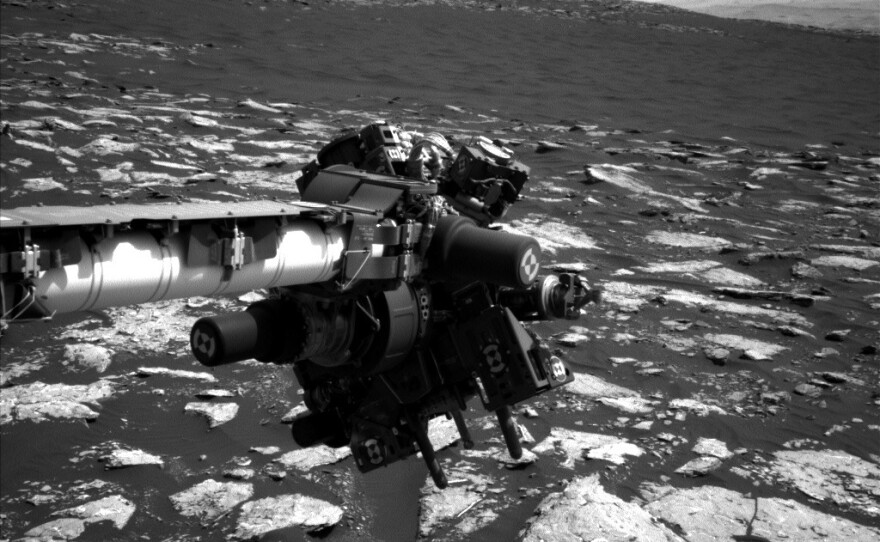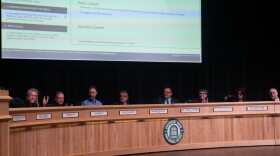
Ever since NASA's Curiosity rover landed on Mars in 2012, it's been slowly making its way along hills, dunes and mesas, collecting rock samples all along the way.
But last week, as it started climbing up a gently sloping mountain, called Mount Sharp, it started acting weird. NASA engineers now say that a part of the extendable arm, the drill that bores into the Martian rock, keeps getting jammed.
Just as the tip hovers a few inches off the ground, the drill stops.
"We said 'go,' and it just didn't go," says Ashwin Vasavada, a project scientist with NASA's Jet Propulsion Laboratory.
"You can't just go to Mars and take it apart," he says. So engineers have been running tests to narrow down the possibilities for what's causing the snag. They've ruled out electrical and software problems and now think it has something to do with a brake inside the motor that moves the drill.
For now, they don't want to move the rover at all until they can get the drill back on track.
"Moving the arm could affect our ability to understand the problem, like disturbing a crime scene, so to speak," says Vasavada.
He and his colleagues have managed to get it working correctly again a few times, but it keeps stalling. They need the 7-foot-long arm to reliably fold back into place for the rover to get anywhere in one piece.
"It would be dangerous to move it around," says Vasavada, because a heavy set of instruments sits at the end of the arm. Moving the rover with its appendage extended, he says, would be "kind of like when you go over a speed bump and then everybody shakes."
So until they can figure out what's going on, Curiosity will stay perched a little way up the mountain, snapping photos.
Scientists are interested in Mount Sharp because its layers of rock are like a timeline extending billions of years into the Martian past. They're particularly interested in clues about how ancient lakes and groundwater changed over time, potentially altering the conditions that could once have been capable of supporting microbial life.
So far, Curiosity has driven a little under 10 miles since it landed on the Red Planet four years ago.
Copyright 2016 NPR. To see more, visit http://www.npr.org/.






